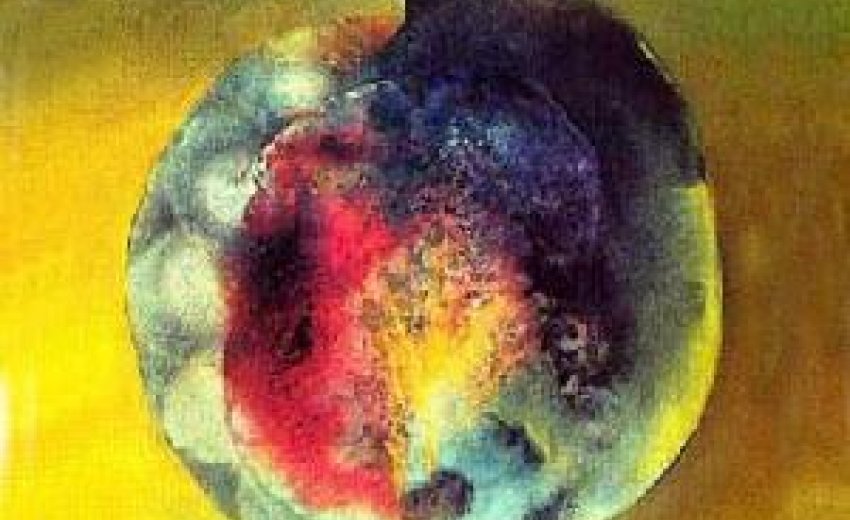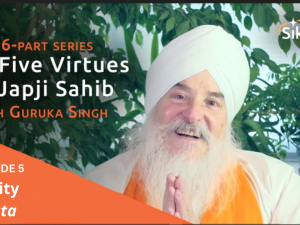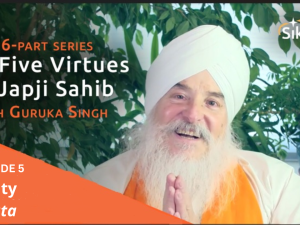 One of my friends, who is an environmentalist for Punjab, mentioned that I should really experience the changing nature of the weather in the Punjab. One has to live there and enjoy the glamour of each day. As the days pass by, no day is ever the same; the air, wind, the flora and fauna of Punjab is in constant change and so is the mood of the people of Punjab.
One of my friends, who is an environmentalist for Punjab, mentioned that I should really experience the changing nature of the weather in the Punjab. One has to live there and enjoy the glamour of each day. As the days pass by, no day is ever the same; the air, wind, the flora and fauna of Punjab is in constant change and so is the mood of the people of Punjab. He mentioned Bara Maha which made me think and ponder on the environment within the context of the Bani. The seasons come and go but the current concerns are the environmental injustice that Punjab is a victim of water crisis as challenges: water and air pollution, land degradation, soil and water erosion, drought, ecological and other environmental concerns.
Bhai Pardeep Singh Rai Ji in his book: Environmental Injustice in the Punjab, has hope for the future. The desire for clean air, water and soil transcends caste, religion and gender and the movement to protect these basic human rights offers an unprecedented opportunity for Punjabis to still come together to preserve the Land of Five Rivers blessed by the Guru Sahibian.
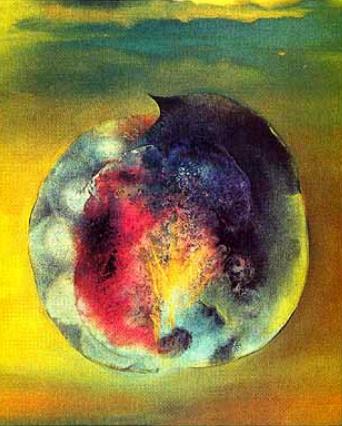 BARA MAHA, is a form of folk poetry in which the emotions and yearnings of the human heart are expressed in terms of the changing moods of Nature over the twelve months of the year. In this form of poetry, the mood of Nature in each particular month depicts the inner agony of the human heart which in most cases is illustrated as a woman separated from her spouse or lover.
BARA MAHA, is a form of folk poetry in which the emotions and yearnings of the human heart are expressed in terms of the changing moods of Nature over the twelve months of the year. In this form of poetry, the mood of Nature in each particular month depicts the inner agony of the human heart which in most cases is illustrated as a woman separated from her spouse or lover. In Punjabi, Guru Nanak's Bara Maha in the measure Tukhari is not only the oldest composition belonging to this genre (style or kind) but also the first in which the theme of love poetry has been transformed into a spiritual one. He made the human soul the protagonist which suffers in the cesspool of transmigration as a result of its separation from the Supreme Soul. This is followed by Guru Arjan Dev Ji's Bara Maha.
Guru Arjan's Bara Maha falls in the viraha (separation) category, depicting the pangs of the bride through the twelve months, i.e. the human soul separated from her Divine Essence. What a beautiful analogy the Gurus had in mind!
Bara Maha Manjh
This is Guru Arjan Dev Ji's calendar poem in the measure Majh included in the Sri Guru Granth Sahib (SGGS 133-136). The opening verse of the composition presents the binary theme of the poem: the human soul's separation from the Divine Soul (kirati karam ke vichhure- bound by our deeds are we parted from Thee), along with its quest for union with Him (kari kirpa melahu ram- by Thy grace grant union, 0' Lord).Torn asunder from her Immutable Origin, she suffers. For example: asaru tapanda tisu lagai hari nahu najinna pasi the month of Asar burns for her who does not have her Divine Husband close to her.
The women in these verses are tortured by duality: they see themselves apart from the Eternal One. Thus they remain victims to Yama, the God of death, and keep migrating from one birth to another.
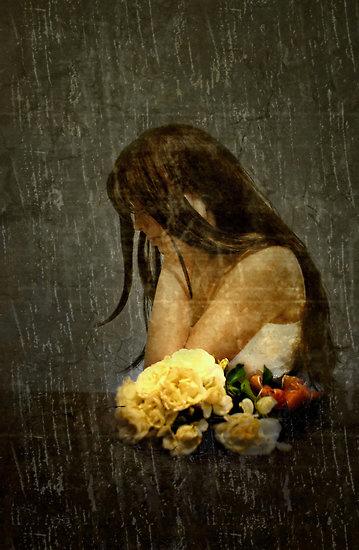 This existing tragedy is attributed to karma (the effects of past deeds) which are referred to as malu (filth) which accumulates through successive births. But time passes on and waits for no one. One month passes into the next. The Bikarami year begins with Chet and ends with Phagun (Phalguna) only to begin again with Chet (Chaitra).
This existing tragedy is attributed to karma (the effects of past deeds) which are referred to as malu (filth) which accumulates through successive births. But time passes on and waits for no one. One month passes into the next. The Bikarami year begins with Chet and ends with Phagun (Phalguna) only to begin again with Chet (Chaitra). As one sows, so shall one reap. Every action has a sequence and a consequence. With good deeds the chasm can be bridged. But good deeds spring spontaneously from a good heart and a mature soul. Every one of the twelve months offers opportunities to unite with the Timeless One. However two conditions apply. Firstly, initiative on the part of the individual in the form of an intense longing - keeping the company of the holy, reciting the Divine Name - singing the praises of the Infinite and realizing that He is always within us. Secondly is Kirpaa - the favour, the Grace of the Lord Divine.
Throughout the composition we hear Guru Arjan Dev Ji beseech Him for His mercy - His benevolent glance (nadar). Once united, ultimate liberation is achieved and one is freed from the cycle of birth and death. Through the months, time are transcended and one is transported into the state of Timeless everlasting bliss.
Excluding the opening stanza which serves as a prologue and the concluding one which serves as epilogue, each of the intervening stanzas commences with the name of the month, beginning with Chet. By cherishing the Lord in the month of Chet one attains deep bliss. Vaisakh, the month following Chet, becomes gladsome only if one meets the Lord's devotees who help him end his duality. Asar is scorching for those separated from the Spouse and Savan is blessed for those wives who are united with their Divine husband cherish in their hearts the Name Divine .
However man's own forgetfulness of God is the cause of all his suffering. All duality and pain ends, and by great good fortune one attains union with the Lord . In the month of Magh, man must 'bathe' in the dust of the feet of the holy and remember His name, for thus alone can he wash off the dirt of past deeds. The poem concludes with the statement that for him upon whom rests the Lord's grace, all months and days and all times are auspicious. It is this Divine nadar (benign benevolent glance) coupled with the individual's own longing and will which helps him break the cycle of transmigration and win acceptance at the Lord's doorstep.
The Bara Maha also has a philosophical structure. It artistically celebrates the existence of the Singular Reality and reiterates that there is no one besides Him: Prabh binu avaru na koi ; prabh tudhu binu duja ko nahi; prabh vinu duja ko nahi. This outlines the basic tenet of the Sikh faith. Everything and everyone is one with God. The poem also poses the Sikh paradox that while He is in everything and is everywhere: Jali thali mahialipuria ravia vichi vana - He pervades the waters, the earth and the spaces and He is in the woods and glades, He is utterly unfathomable and unknowable with the human mind - agam agahu.
Thus, “He” is fully Immanent as well as Transcendent. Sirgun and Nirgun. The Sikh understanding of the world is affirmed as a "separation" in which there is no essential gap between the Creator and His creation, but because of the illusionary vision of the human ego, the self is seen as apart from its original core. Salvation is the experience of "unity" which rather than being a physical merging is fundamentally a direct experience of the One within everyone.
Furthermore we understand that the essential nature of God is Love and that, in fact, God is made of Love. Compassion and mercy are the first marks of a man or woman of God. In fact, so caring is the Lord Master that "He will draw you unto Himself by embracing you and holding you in union everlasting” -karu gahi lini parbrahmi bahuri na vichhuriahu.
The concluding verses say that one must fully participate in life, discarding any hesitation to be fully present. All beginnings are made auspicious for he who has trust in the Divine. Optimism is the keynote of this poem of Viraha even though it is about the pangs and aches of separation.The philosophical ideals of the Sikh faith have thus been reflected most poetically in the Bara Maha. The reader is struck immediately by the enthralling rhythm of the composition. Both assonance and consonance have been employed with telling effect. The lines in the different stanzas run in rhymes.
For instance, in the opening passage, "am" is repeated throughout; in the second, "na"; in the last "re". Guru Arjan's Bara Maha is recited ceremonially at Sikh congregations or by individuals at their homes on the first day of each of the Indian solar months. This is a way of announcing the beginning of the new month and invoking Divine blessing.
Bara Maha Tukhari
Guru Nanak Dev Ji's twelve months’ hymn in Raga Tukhari in the Sri Guru Granth Sahib, stands out in Sikh literature for its poetic splendour and philosophical import. The movement of the twelve months, including the lunar and solar days, and the effect of their transitions upon beings of diverse species those born from the egg (andaj), those born from the foetus (jeraj), those born from the sweat (setaj), and those born from the earth (utbhuj) have been poignantly and picturesquely portrayed in this poem. Transcending time and space the emotion is expressed in the person of a young bride ardently searching for her Divine Bridegroom through the cameos of the changing aspects of the twelve months.
The climate of Punjab ranges from bracing cold in the winter to scorching waves of heat in the summer. This extreme in temperatures along with the two monsoons produce a variety of seasons and a constantly changing landscape. The rains of July and August mark the end of the extreme heat of May and June, and the return of spring in March and April marks the end of the extreme cold weather in December and January. It also gets very foggy and cold in Punjab in the winter.
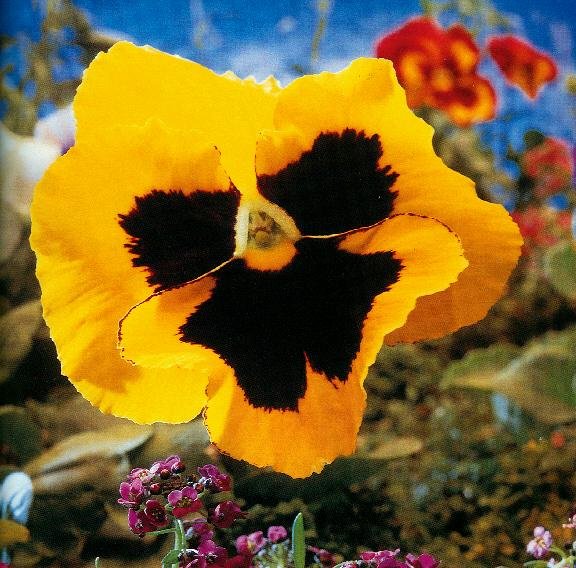 The Indian lunar calendar begins with the month of Chet or Chaitra (mid-March to mid-April). It is a month of splendour when the beautiful blossoms appear. Flowers in the woods are in full bloom; the bumblebee hums rapturously; the koel sings on the mango tree, the bee hovers around the bush which is fully in blossom. The countryside is an expanse of mustard yellow, broken by solid squares of green sugar cane with its fluffy pampas plumes. Chet is springtime when Nature is at its most glorious and the air is saturated with immense joy. Every creature seems to celebrate the season's beauty. The bumblebee and its blossoms, the woods and its flowers, the koel and its mango tree...
The Indian lunar calendar begins with the month of Chet or Chaitra (mid-March to mid-April). It is a month of splendour when the beautiful blossoms appear. Flowers in the woods are in full bloom; the bumblebee hums rapturously; the koel sings on the mango tree, the bee hovers around the bush which is fully in blossom. The countryside is an expanse of mustard yellow, broken by solid squares of green sugar cane with its fluffy pampas plumes. Chet is springtime when Nature is at its most glorious and the air is saturated with immense joy. Every creature seems to celebrate the season's beauty. The bumblebee and its blossoms, the woods and its flowers, the koel and its mango tree...But, piru ghari nahiavai dhan kiu sukhu pavai birahi birodh tanu chhijai (The Groom hasn't returned home; then how will the bride be comforted? She shrivels away in pangs of separation. (SGGS 1108).
The young woman, then, is the only one who stands isolated. She is the one who does not have her Groom by her side. The beauty and lusciousness of springtime sharpen her sense of deprivation. Whereas everything in Nature is blooming, she is withering away in separation.
Paradoxical though it may sound, this state of contrast with the surroundings presents the picture of an organic structure to which she belongs and of which she indeed is the centre. But unfortunately she cannot participate in the reigning beauty of the season, for she is lonely. Perhaps because of her separation and forlornness, she becomes all the more aware of the togetherness and rapture of everyone and everything around her and all of whom seem to her to fit into a perfectly integrated joyous whole.
 Following Chet is the month of Vaisakh (mid-April to mid-May) when the tree boughs are covered in fresh green leaves. The bride "sees" (dhan dekhai) the newness in this green lushness and begs the Groom to come home. Since this is the month of first harvest, the farmers negotiate business deals. Commerce enters the bride's vocabulary too: "... tudhu binu adhu na molo kimati kaun kare tudhu bhavan ... without you I am not worth a dime, but if you are with me, I become priceless" (SGGS 1108). She then wishes that someone, somehow, would see her Beloved and help her to see Him -dekhi dikhavai dholo. Nature, commerce, fellow human beings and the spiritual quest become synthesised together in the bride's world view.
Following Chet is the month of Vaisakh (mid-April to mid-May) when the tree boughs are covered in fresh green leaves. The bride "sees" (dhan dekhai) the newness in this green lushness and begs the Groom to come home. Since this is the month of first harvest, the farmers negotiate business deals. Commerce enters the bride's vocabulary too: "... tudhu binu adhu na molo kimati kaun kare tudhu bhavan ... without you I am not worth a dime, but if you are with me, I become priceless" (SGGS 1108). She then wishes that someone, somehow, would see her Beloved and help her to see Him -dekhi dikhavai dholo. Nature, commerce, fellow human beings and the spiritual quest become synthesised together in the bride's world view. In the month of Jeth, the bride sings "Why should the Groom be forgotten? pritamu kiu bisarai" (SGGS 1108.) In the heat of Jeth, the earth burns like a furnace. In the words of Guru Nanak Dev Ji: “The sun scorches and the earth burns like an oven. The waters give up their vapours, yet it burns and scorches relentlessly.” The temperature rises and the succession of hot days and the shimmering mirages are occasionally broken by fierce storms which spread layers of dust and sand over everything. This external heat drives all beings to inwardness. In search of the cool, all creatures are on the lookout for the farthest interior. The bride, too, contemplates upon the Divine Groom and His virtues. Her state of mind is in harmony with this time of the year.
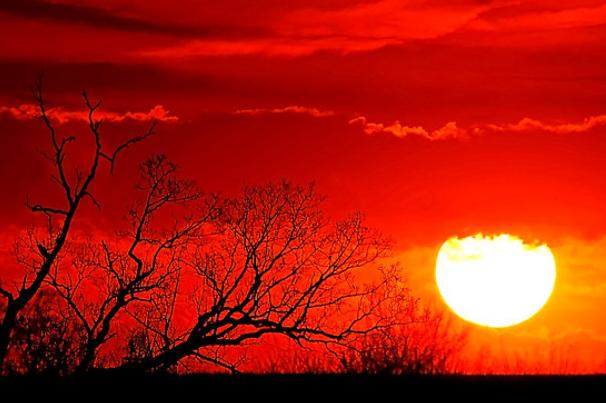 In the scorching month of Asar, the sun blazes in the skies. Its fire sucks the sap of the earth. The earth roasts and suffers. Even the crickets wail. But the chariot of the sun marches on. The bride seeks shade- chhaia dhan takai. Here the bride is a full participant in the cosmic scene: she shares the suffering of the earth, of the cricket. The great earth and the tiny cricket are representatives of the entirety of creation. All creatures suffer. Their search for cool shade is perfectly reflected in the bride's search for chhaia (shade.)
In the scorching month of Asar, the sun blazes in the skies. Its fire sucks the sap of the earth. The earth roasts and suffers. Even the crickets wail. But the chariot of the sun marches on. The bride seeks shade- chhaia dhan takai. Here the bride is a full participant in the cosmic scene: she shares the suffering of the earth, of the cricket. The great earth and the tiny cricket are representatives of the entirety of creation. All creatures suffer. Their search for cool shade is perfectly reflected in the bride's search for chhaia (shade.)
After the blazing heat of Asar comes the month of Sawan, bringing with it welcome rain showers. The monsoon makes a spectacular entry. The first big drops are literally swallowed by the dust and a heavenly fragrance rises from the earth. Two months of incessant downpour turn the landscape into a vast swamp. The earth is cooled and quenched, but not the bride, for her Groom is still in the far-off land - pirpardesi sidhae. She lies alone on the bed. Along with the pain of solitude is her fear: the lightning amid the monsoon clouds terrifies her. Nature around her does not soothe the pain of her heart. She addresses her mother: "maranu bhaia dukhu mae - 0' Mother, it is death for me" (SGGS, 1108).
Having lost her sleep and appetite, the bride in the month of Sawan lives a deathlike life. The integration of the polarities of life and death, the lightning in the skies and the bed on which she alone tosses and turns in darkness are one and the same within her.
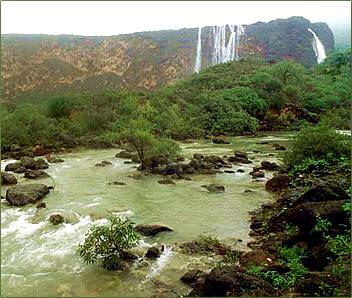 Bhadon is the month of opulence: both land and river fill up with water and become a mass of swirling, muddy waters. During the entire dark night it rains cats and dogs. Birds and animals feel invigorated. They shriek as if they cannot contain the fullness within: peacocks cry with joy, the frogs croak in contentment, all sending out their noisy calls; the papiha, the rainbird cries forth, "peeoh-peeoh –Beloved! Beloved! “Overflowing with life, the fangs of serpents and the stings of mosquitoes are full of venom. Guru Nanak Dev Ji went into raptures over it:” The season of the rains has come and my heart is full of joy….river and land are one expanse of water.”And the pools overflow with water.
Bhadon is the month of opulence: both land and river fill up with water and become a mass of swirling, muddy waters. During the entire dark night it rains cats and dogs. Birds and animals feel invigorated. They shriek as if they cannot contain the fullness within: peacocks cry with joy, the frogs croak in contentment, all sending out their noisy calls; the papiha, the rainbird cries forth, "peeoh-peeoh –Beloved! Beloved! “Overflowing with life, the fangs of serpents and the stings of mosquitoes are full of venom. Guru Nanak Dev Ji went into raptures over it:” The season of the rains has come and my heart is full of joy….river and land are one expanse of water.”And the pools overflow with water. The pulsating animate and inanimate worlds join in a vivid pattern. Juxtaposed against this bursting forth of Nature is the bride's desolation. She yearningly contemplates the fullness, the energy and the joy surrounding her. The presence of God is pervading everywhere. The Nine Treasures of the Lord’s Name fill the homes of all hearts. (SGGS 928). Standing in the centre of it all, she exclaims, "binu hari kiu sukhu paiai -where, where is comfort for one without her Groom?"
The bride's actualisation of Asuni (Asuj), the seventh month, is, in fact, a realisation of her own self. The cosmic time and space mirror her own situation. Because she is caught in a sense of duality, she stands forsaken by her singular Groom and remains in separation. On the ground, "kukah kah si phule -the country shrubs bearing white flowers are in bloom" (SGGS, 1109). These white flowers represent her own white hair; .the bride is greying. Furthermore, the coming season frightens her: "agai gham pichhai ruti jada dekhi chalat manu dole - gone is the summer and cold winter is soon to come; this makes my heart tremble" (SGGS, 1109). What the bride realises at this seasonal juncture is the loss of her own youth and the setting in of old age, and she becomes apprehensive. But she also sees in this autumn month some green boughs which instill optimism in her. The possibility of meeting with her Groom again strikes her. "sahaji pakai so mitha - that alone is ripe and sweet which ripens slowly in its own sweet time" (SGGS, 1109), the bride tells herself.
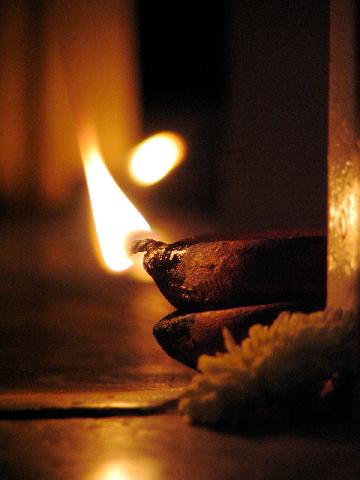 In the month of Kattak or Kartik, the days begin to get shorter. Lamps are lit earlier in the evenings. The lamp becomes in the poem a symbol rich in nuance. It represents the refined emotional and intellectual faculties of the bride which will eventually lead her to apprehend the Divine. The traditional lamp (dipak) is a tiny clay bowl, pointed at one end, with a cotton wick and filled with oil. But only that lamp shines steadily which is lighted by the match of knowledge dipaku sahaji balai tati jalaia, and whose oil is rasa, the aesthetic essence of love dipak rasa telo (SGGS 1109). Simultaneously, the lamp is essential to seeing, to recognising. The powers of eyesight and insight coalesce in it. Suggesting coalition of knowledge (kindling match) and love (oil) in the bride's psychological condition, the dipak connects her physical being with "cosmic" time during the evenings of the month of Kattak. In this state she feels she is closer to achieving her goal of union with the Groom.
In the month of Kattak or Kartik, the days begin to get shorter. Lamps are lit earlier in the evenings. The lamp becomes in the poem a symbol rich in nuance. It represents the refined emotional and intellectual faculties of the bride which will eventually lead her to apprehend the Divine. The traditional lamp (dipak) is a tiny clay bowl, pointed at one end, with a cotton wick and filled with oil. But only that lamp shines steadily which is lighted by the match of knowledge dipaku sahaji balai tati jalaia, and whose oil is rasa, the aesthetic essence of love dipak rasa telo (SGGS 1109). Simultaneously, the lamp is essential to seeing, to recognising. The powers of eyesight and insight coalesce in it. Suggesting coalition of knowledge (kindling match) and love (oil) in the bride's psychological condition, the dipak connects her physical being with "cosmic" time during the evenings of the month of Kattak. In this state she feels she is closer to achieving her goal of union with the Groom. In the month of Maghar, the bride listens to the praise of her Divine Groom through song, music, and poetry, and her sorrow departs "git nad kavit kavai suni ram nami dukhu bhagai" (SGGS 1109). Here can be discerned the effect of aesthetics upon the human mind: music/sound which travels in external atmosphere penetrates into the very being of the bride. Thereby, her sorrow (dukhu), literally vanishes away (bhagai). Guru Ji paints a vivid picture of the bride sitting amidst other women and men, listening to song, music and poetry. She is part of a symphonic gathering, the sadhsangat. We thus see in the month of Maghar the bride as a participant within a community which cherishes the singing of the Divine Name.
The description of the month of Poh or Pokh begins with the line: pokhi tukharu parai vanu trinu rasu sokhai
In Pokh the snow falls, sapping the rasa from woods and grass. (SGGS 1109). And it ends with: Nanak rangi ravai rasi rasia hari siu priti saneho
Says Nanak, the bride who is in love with her Groom has the rasa of the charming Beloved to savour. (SGGS 1109 ).
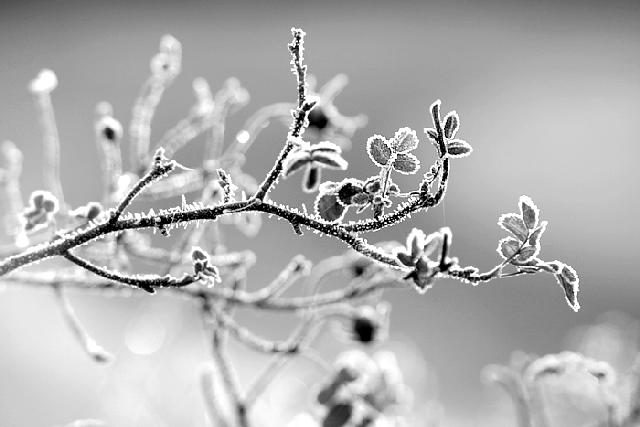 The contrast between the opening and the final line of the hymn is conspicuous: the cold white frost covering the earth sapping away the rasa of all vegetation is juxtaposed to the bride who, in her love for the charming Groom, would be savouring its rasa.
The contrast between the opening and the final line of the hymn is conspicuous: the cold white frost covering the earth sapping away the rasa of all vegetation is juxtaposed to the bride who, in her love for the charming Groom, would be savouring its rasa. Perhaps it is the panorama of the starkly white frost which ignites in the bride's imagination that warm and vibrant fantasy. Also, in the month of Poh, the bride discerns herself to be related with all other creatures: andaj jeraj setaj utbhuj ghati ghati joti samani. darsanu dehu daiapati date gati pavau mati deho. (SGGS 1109) The one light (jyoti) permeates (samani) all hearts (ghati ghati), be they eggborn (andaj), foetusborn (jeraj), sweatborn (setaj), or earthborn (utbhiy). Through the singular life energy the bride perceives the unity of the universe. From within this linked circle, she, in a lovely alliteration of the "d" "d 's"creating a circle of their own, ardently implores her Compassionate Groom (daiapati date) to bestow upon her a vision of Himself (darsan u dehu).
In Magh, the month of pilgrimage, the bride realises that the place of pilgrimage is within herself. The sacredness of all holy places and of all time would be hers, if her beauteous Groom was pleased with her: pritam gun anke suni prabh banke tudhu bhava sari nava; Gang jamun tab beni sangam sat samund samava punn dan puja parmesur jugi jugi eko jata; Nanak maghi maharasu hari japi athsathi tirath nata. This would be my bath in the Ganga, the Yamuna and confluence with the Sarasvati and in the seven oceans as well.
All charity and worship for me is the recognition that, throughout all the yugas, there is but One Groom.
Says Nanak, in the month of Magh, to taste the great essence of meditation upon the Beloved is alone worth bathing in the sixty-eight holy rivers. (SGGS 1109.)
The pilgrim seat is within and not anywhere outside. The sacredness of all holy places and of all time; the merit of bathing at the Ganga and the Yamuna and at their confluence with the Sarasvati; bathing in all the seven seas; all charity and worship; all these would be the bride’s if she were to win the Groom's favour. The Sikh view that external ritual is empty and unnecessary is here artistically expressed. Also, time is not chopped up: "yugas" are, in the literal sense, "yoked together" by the knowledge that the Singular Beloved pervades all the ages: past, present, and future.
Finally, in the month of Phagun, the bride effaces herself "apu gavaia." With the ego gone, her desires are ended "man mohu chukaia" and with the "integrator" of time and space gone, what remains is the integration itself. Continuous bliss is experienced. All duality vanishes. Even night and day are conjoined and what is experienced continuously is complete ecstasy: "andinu rabasu bhaia." (SGGS 1109).
The twelve months thus become very important; for it is within them that the interaction of the timeless with time takes place. The young bride remains in quest of her Timeless Beloved within her environment.
One discerns here the foundations for the most positive approach to life and living in the Sikh faith. In the final passage of the Bara Maha, Guru Nanak Dev Ji praises all the twelve months, the six seasons, the lunar and the solar days, the hours, the minutes, the seconds as "bhale" - blessed.
Guru Arjan in his composition Bara Maha, in Raga Majh, reiterates this affirmative view of the phenomenal world in almost identical terminology. According to Nanak it is here and now that the One pervading all time and space is instantaneously found: be das mah ruti thiti var bhale ghari murat pal sache ae sahaji mile. (SGGS 1109)
References:
1. Zbavitel, D; The Development of the Baramosi in the Bengali Literature. Archiv Orientaini 29, 1961
2. Vaudeville, Charlotte, Barahmasa in India Literature. Delhi, 1986
3. Gunindar Kaur, Guru Granth Sahib: Its Physics and Metaphysics. Delhi, 1981
4. Padam, Piari Singh, Punjabi Bara Mahe. Patiala, 1959
5. Gurmukh Singh, Barah Maha. Ludhiana, 1986
6. Gurbilas Chhevin Patshahi. Patiala 1970
7. Gian Singh, Giani, Twarikh Guru Khalsa. Patiala 1970
8. The Encyclopaedia of Sikhism by Late Professor Harbans Singh: Volume 2; University of Patiala, Punjab.
9. A History of the Sikhs Volume 1 1469-1839 by Khushwant Singh Oxford University Press 17th. Impression 2001. Retrieved from sikhiwiki.org
10. Environmental Injustice in the Panjab by Pardeep Singh Rai; Defenders of the Environment and Ecology of Panjab(DEEP) 2006; Nectar Publishing
